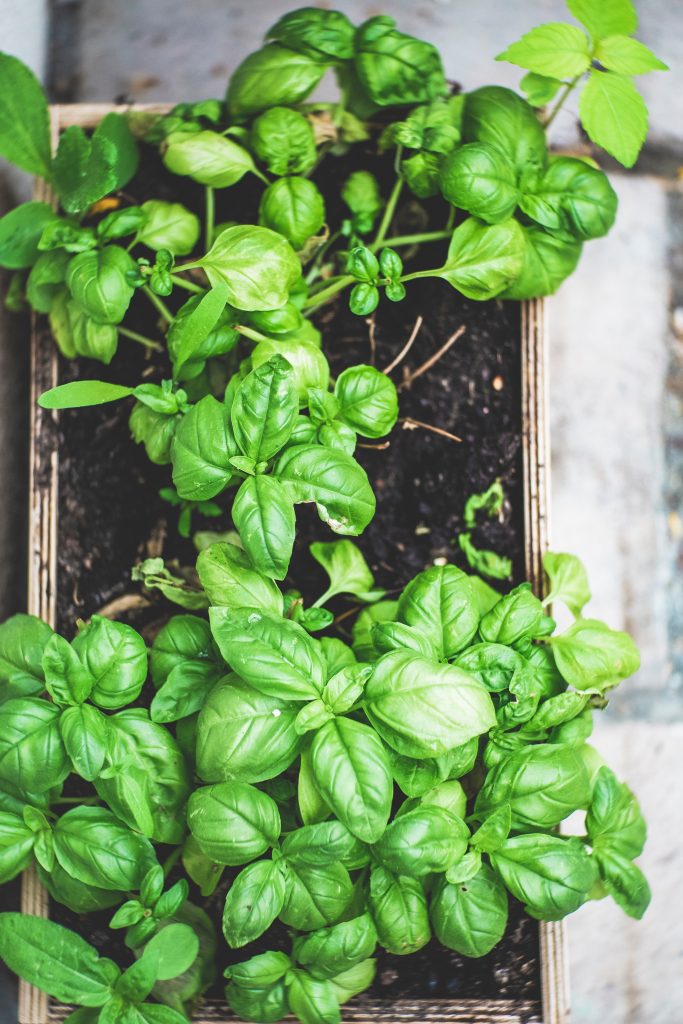Growing your own veggies doesn’t require acres of a farmers’ field. With the right knowledge, the harvest can start from your home.
No space? No greenhouse? No big garden? No problem! This guide to growing your own veggies with little space will help you enjoy fresh veggies you’ve grown yourself, no matter how little room you have to grow.
We’ll cover everything step by step: what mindset to have, where to plant your veggies (there are way more places to plant than you probably know about), and which veggies will yield the biggest harvest in the smallest spaces.
You’re going to be in for some surprises! Let’s dive in.
Growing vegetables in small spaces: the rules of the game
How do you grow vegetables in small spaces? As with any new game, there are some ground rules (sorry, I couldn’t resist that one!)
#1: Cut yourself a break if you weren’t born with a green thumb
Celebrate that you are undertaking an adventure that will provide you with not only free food but a deep level of satisfaction. Yes, it will take some planning, and there’s a bit of a learning curve, but it’s fun, and your food will taste fabulous!
Once you’re up and growing, celebrate any harvest, no matter how small. Remind yourself that both you and your veggies have grown in the process (OK, I’ll stop with the silly puns now. Promise. Unless I find another one…?)
#2: Take a fresh look at your living space
There are plenty of spaces in your home where plants can grow: window sills or window boxes, a patio, a set of stairs, or even up a wall.
If you can, clear any clutter. The more unwanted items you take to the second-hand shop, or you put up on eBay, the more space for you and your harvest.
Get creative. Take the time to walk around your space and look everywhere. Where is the light? The more light for your plants, the better.
#3: If you don’t have enough natural light, provide an alternative
Just because your home isn’t flooded with light doesn’t mean you can’t grow veggies indoors.
If you need more light, indoor veggies can do well with full-spectrum light bulbs, which replicate the natural spectrum of sunlight.
#4: Consider vertical gardening, aka growing vegetables up a wall
Take a look at your walls. Which walls get lots of light?
Where can you crisscross some string or wire with tacks, or put a container with a trellis? You may not want or be able to put holes in your wall, so putting a container with a trellis solves that problem while looking gorgeous.
The more vertical your veggies, the more you can grow with the space you’ve got.
#5: Hang up your veggies, instead of your hat
Many veggies grow well in hanging pots or containers, trailing their bountiful harvest right down to the ground.
Got a lot of light on top of that closet? Aha! You can fit a container there, I know you can. You’ll thank me when you’re plucking some juicy strawberries on your way to the kitchen.
Time to plan
For the biggest harvest of growing vegetables in small spaces, once you’ve looked at your living space and seen what’s available, make a quick plan to decide:
- Where you’re going to put pots
- Where you’ll go vertical with trellises or bookcases
- Where you’ll put hanging containers
Now for the fun part: choosing what to plant!
The following veggies will all happily grow either indoors or outside.
Fast-growing vegetables in pots
Don’t start with asparagus. It’s tasty, but it takes 6+ years to grow from seed. Who has that kind of time?
Besides, when you first get started with anything new such as growing your own veggies, you’ll want to get results as quickly as possible. Who doesn’t love instant rewards for a bit of effort, right?
The easiest vegetables to grow in pots
- Lettuces: you can harvest your salad in as little as 45 days. If you want the hardiest lettuce, choose romaine.
- Chard: it grows well in small, tight spaces. Cut a few leaves off of the mother plant, and the plant will keep producing more leaves
- Radishes: hardy plants that can provide a monthly harvest once they get going
- Tomatoes: start with a young plant for fastest results
- Chilis and peppers: Chilis are very pretty, and both grow well in containers
- Eggplant: choose a faster-maturing variety (otherwise allow 100 to 120 days from seed to fruit.) Oriental eggplant works well for its small shape, and it happily grows in containers either outside or inside
- Pole beans and peas (see below)
Fast-growing vegetables that climb
- Pole beans: French filet beans stay tender for longer, and the plants can grow to over 8 feet high. If you’re in a hurry, choose Scarlet Runner beans, which also grow very high (12 feet!) and produce edible, red flowers. The purple Lablab beans also have edible flowers and leaves
- Peas: snow peas, snap peas. If you’re planting outside, plant your peas in the spring. Then when their harvest has finished two months later, remove them and plant pole beans in the same spot! Pole beans and peas grow quite happily indoors in containers, as long as they’ve got space to climb
- Malabar spinach: this vine can grow to 4 feet high. For the maximum harvest, cut the outer leaves as needed, and let it grow
- Hops: We usually use hops to make beer, but some people use them to make tea as a sleeping aid, or they simply eat them as vegetables. Note: Unlike the other veggies listed here, hops must be grown outdoors as their roots need a lot of room to grow
Fast-growing vegetables for hanging pots
- Cherry tomatoes: these will provide a bountiful crop in a matter of weeks (approx. 75 days from seed to fruit, depending on the variety)
- Edible flowers: tuberous begonia has gorgeous edible petals. Nasturtiums work well too, as they tolerate partial shade, so they’re useful for hanging underneath overhangs or balconies
- Eggplant: the eggplant usually hides under the leaves, so it’s easier to access in a hanging basket, and the leaves are beautiful
- Cucumbers: you can enjoy the beautiful flowers and leaves
- Small squash: dwarf pumpkins look very pretty!
- Small peppers and chilis: lovely colors, and very hardy plants
And because tomatoes grow outside, inside, climbing, or hanging, they get some tips all their own.
My top tips for growing tomatoes indoors
It takes time to grow tomatoes from seed, but you can easily purchase seedlings to speed things up.
Here’s my top tip: prune your tomato plant back to a single vine. Not only will its plant neighbors be grateful, but you’ll get the biggest harvest of tomatoes for the smallest amount of space!
Tomatoes do very well indoors because they prefer dry conditions. Outside the plants are pollenated by bees, so give your plants a few soft shakes when the flowers have formed to spread the pollen around the plant (yes this really works!)
Vegetables and flowers together: Making a herb garden
Herbs are easy to grow in containers, inside or outside. Alternate your herbs with edible flowers to make the most of the space.
Here are some great choices for making a herb garden
- Cilantro: Cilantro is delicious in soups or salads, and it looks gorgeous
- Basil: Basil is a very hardy plant, so good to get started
- Parsley: Flat leaf or curly
- Chives: Chives are easy to grow, and the purple flowers are edible
- Nasturtiums: Both the leaves and the flowers are edible
- Pansies: Pretty, edible flowers in a variety of colors
How to maximize space outside
This is very much a case of “work smarter, not harder.” With the right knowledge and a bit of practice, a newbie gardener will be in for a very happy surprise with all the vegetable growing opportunities once you learn how to maximise space outside.
Plant your veggies in triangles instead of in rows.
You’ll be able to fit 10-15% more plants in the same area. Be careful not to crowd them, as if they are too close together, they won’t yield as many veggies, and they’ll be more susceptible to pests and disease.
Plants that are happy together grow better together
Companion planting can save space too. For example, plant some squash at the foot of your pole beans (I recommend zucchini as one plant yields a LOT of vegetables.)
Plant alternating carrots, onions, and radishes; celery and beets; or tomatoes, onions, and basil. They will yield a better harvest when grown together, and can help keep away disease and pests.
Summary
Here’s a handy recap of the steps I’ve recommended for growing veggies in a small space.
- Take a good look at the space that you’ve got to work with
- Plan where you will plant (indoors or outdoors), and how (containers, trellis, hanging baskets)
- Choose your plants, prioritizing seedlings and fast-growing varieties
- Mix plants that grow well together
- Plant herbs with flowers to maximize your herb garden
I hope you find this guide to growing veggies with little space helpful. Now get planning, get growing, and happy harvesting!


